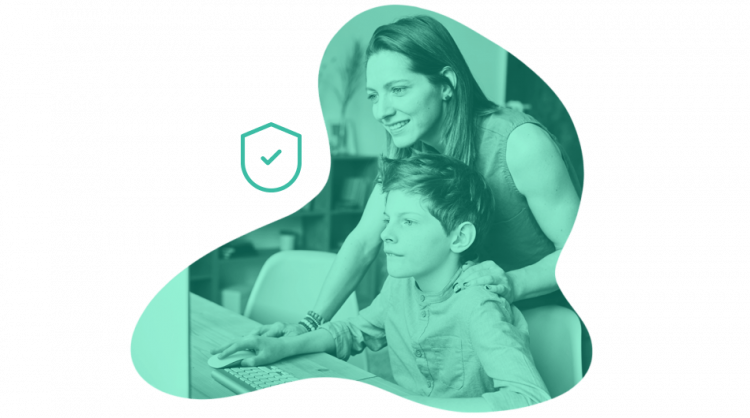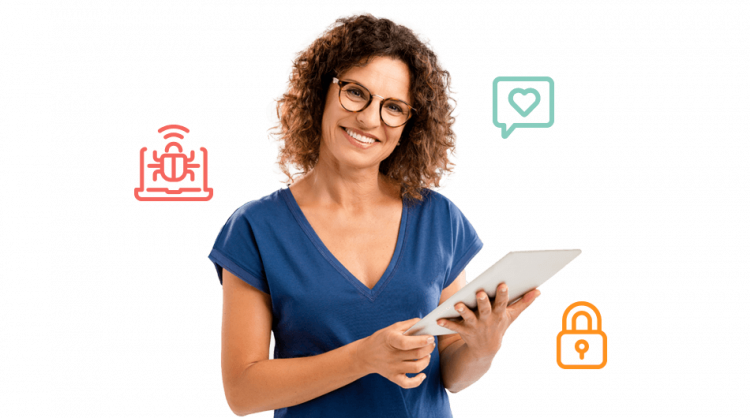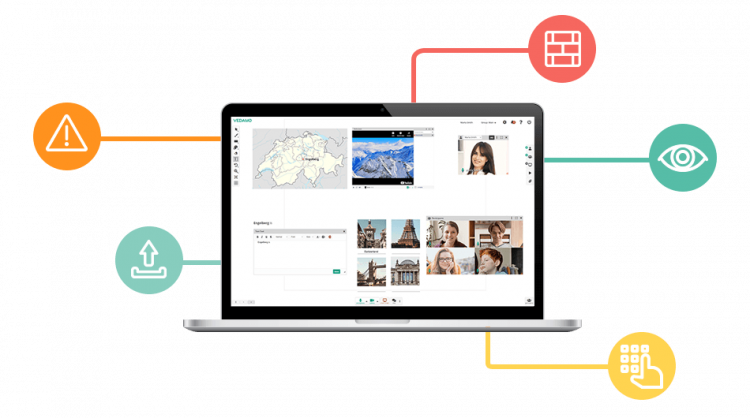How can you take advantage of the full potential of online learning and maintain safety while exploring resources, using apps, and studying in the virtual classroom? Cyber attacks and breaches of private data should not be underestimated. The risks of hacks, phishing, interruptions by internet trolls, and other forms of cyber attacks can disrupt the study process and make both students and teachers vulnerable to personal data leaks, viruses, and so on. Fortunately, there is an abundance of solutions that are purposed to provide safety in the virtual classroom for the most fulfilling online learning experience.
The increased demand for remote learning solutions over the past few months gives the feeling of the beginning of a new era. The switch from traditional classrooms to virtual learning spaces brings new advantages to students and teachers, but also creates new challenges, especially in regards to online safety for everyone who is involved in online learning.
What are some of the risks that we might be exposed to when studying virtually?
- private information breaches and personal data leaks
- cyber bullying
- interruption of virtual lessons by unauthorized users who create the so-called “meeting bombing” during videoconferencing
- phishing
- virus and malware attacks on software, emails, and databases
- scams
Safety in the virtual classroom depends on two main factors – the first is the participants’ behavior and the second is the security features that the software provides for extra protection.
What are some general tips for online teachers that can help in creating a productive and safe virtual learning environment for students of all ages?
- Create and follow strict and clear security and privacy guidelines. The guidelines must include instructions for: websites that are safe to visit, appropriate behavior in the virtual classroom, apps and software that are approved to use, etc. The rules should also include requirements for the place for videoconferencing (many schools encourage students to use shared spaces at home to enroll in the online lessons instead of joining classes from their bedrooms), as well as rules to what appropriate and inappropriate interactions are, and how to avoid distractions caused by pets, TV, etc.
- Create a database with approved websites and resources that students can use for their research when working on assignments. Be sure to make the information easy to access by students at any time.
- Educate students about the hazards of cybercrimes and visiting websites that are not safe. Teach dedicated lessons about the digital footprint that everyone leaves on the internet when posting content (audio, video, photos, and comments). Emphasize the dangers of sharing private information, passwords, and login IDs.
- All devices that are used for online learning should have installed updated antivirus software, as well as a firewall.
- For the younger students, it is recommended to have parental control software installed on the devices used for virtual learning, as well as programs to monitor the online activity of these users. It is a good idea to install solutions to restrict the access to certain websites and apps like web-filtering software. In cases of one-on-one teacher-student videoconferencing lessons, always follow the two-adult online rule with a parent or a guardian also present at the meeting.

What features and solutions in the virtual classroom improve safety during online learning?
- Hold the online lessons in a locked/private virtual classroom. Advanced virtual learning spaces like VEDAMO, for example, have the option to limit access to the classroom to any unauthorized users after a certain amount of time. A good idea for better class management is also to create an attendance sheet for all the participants to ensure easy monitoring of the attendance of every student.
- Control the sharing of files and content on the online whiteboard. With this feature the teacher can easily avoid unwanted events of students sharing inappropriate content, thus disrupting the learning process.
- Back up the data. In theory, even the most secure software can be hacked. Therefore, it is always recommend to go the extra mile and back up the database you work with.
- Restrict the possibility for private chats between students in the virtual classroom. Online bullying is a serious issue that many schools are dealing with. Limiting the internal chats between students can help in preventing situations for peer-pressure-created online bullying. Talk to your students and encourage them to share with you in case they run into any issues. Make them feel understood and important. It is a good idea to keep in touch with the parents and frequently exchange feedback to ensure that each student is feeling safe and motivated to learn.
- Protect the virtual classroom with a passcode or restrict access to the classroom to invited users only. Virtual learning spaces like VEDAMO offer the possibility to invite the users through an email or a direct link. This option provides more security in the classroom and decreases the risk of unauthorized users interrupting the session.
- Always check in advance the third-party apps and technology you are planning to include in the lesson. It’s recommended to avoid using certain apps like TikTok or Facebook that bring a security risk regarding the content shared on the app.
Class management skills help in maintaining a safe and friendly atmosphere in the classroom. Advanced virtual classrooms like VEDAMO provide lots of features in the Moderation tool that give the teacher more approaches to handling unexpected situations, such as inappropriate behavior by the students, etc.

What should you do in case of unexpected events in the virtual classroom in order to maintain a safe and friendly atmosphere?
- Remove unauthorized users – if an uninvited user somehow manages to join the lesson and is disrupting the learning process, the teacher can easily remove them right away from the classroom with a few clicks of the mouse. In many cases, there is also the option to report the user which will limit their access to the platform in general.
- Suspend students – if any student is misbehaving in class, the teacher can use the same feature to remove a user and suspend them from the online lesson. Another way to handle the situation is to separate the student in a breakout room where they can work on an individual assignment.
- One of the main advantages offered by virtual classrooms like VEDAMO is the Moderation tool which allows the teacher to have a lot of control over the various features in the classroom at any time. For instance, the moderator, aka the teacher, has control over the video, audio, and chat, as well as the shared files, the online whiteboard, etc. If needed, they can use the features at any time to mute or disable the video or chat for students who are misbehaving.

Online learning is becoming one of the most powerful methods of education offering countless possibilities for researching and exploring multiple resources and technologies. When the great potential that virtual learning offers is combined with responsibility and effective solutions for keeping the user experience safe and secure, the sky is the limit.
